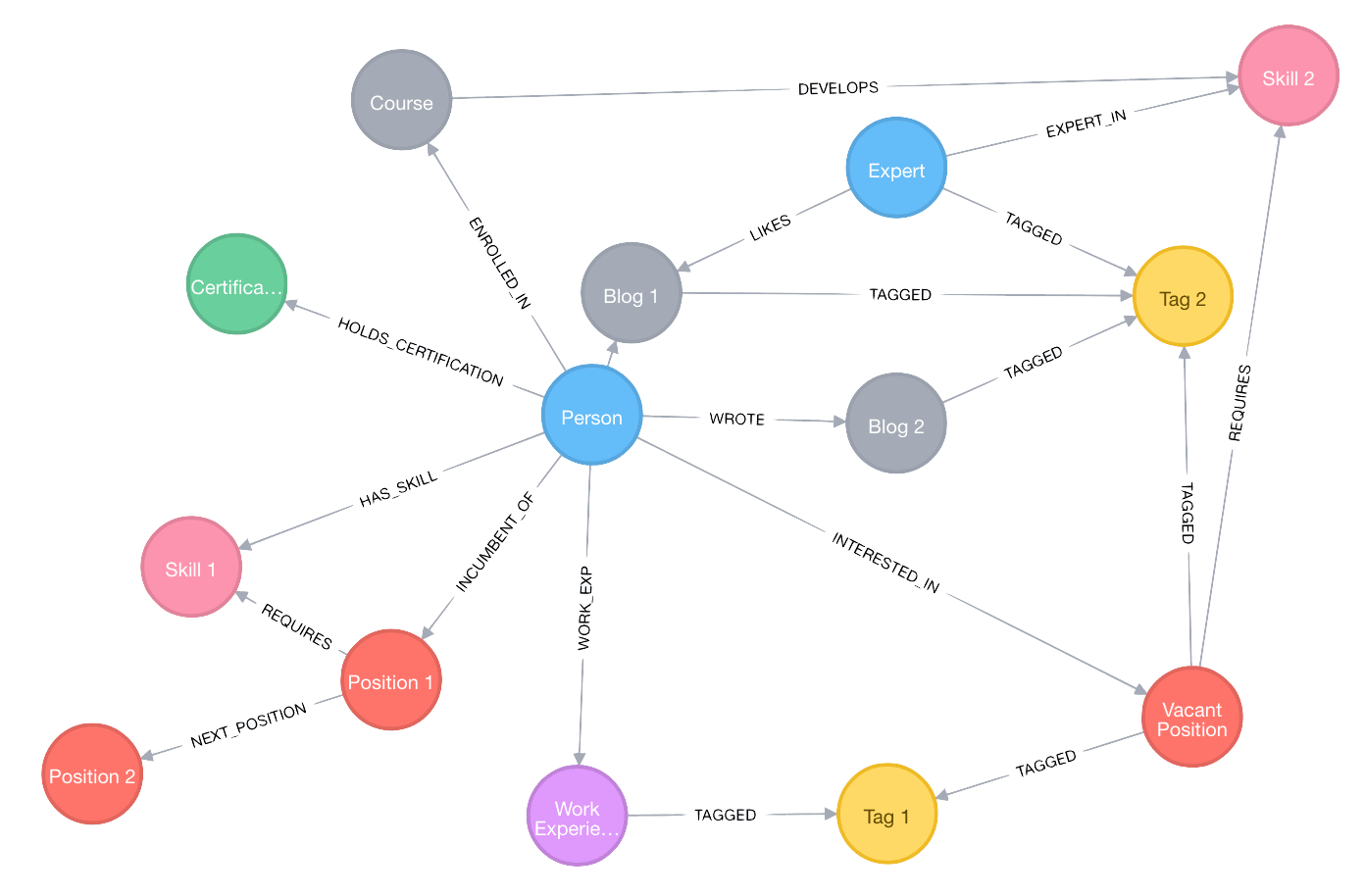In the Bersin Predictions for 2016 report, Josh Bersin states that “it feels as though everything in the world of talent is changing – from the way we recruit and attract people, as well as how we reward them, to the way we learn, and how we curate and manage our entire work-life experience”[1].
In fact, the last decade has witnessed much churn in the human resources and talent management software space to develop holistic solutions for employee engagement and retention. HR continues to grapple with the problem of seeming to know more about people outside their companies rather than inside. The workforce, on the other hand, is highly connected and find it hard to accept the fact that HR can appear so disconnected.
The Changing Landscape of Human Capital Management (HCM)
One way in which the dynamics of organisations are changing is the rise of the network of teams [2], where small but highly cohesive units take on a mission, complete it and then move on to the next assignment. This challenges traditional top-down management structures, leadership development, succession planning and talent retention.
Companies increasingly resemble networks as shown below:

A set of long term goals and ratings that dictate a person’s path through the company continue to be a source of discontent. Instead, identifying and promoting high-performance individuals based on characteristics such as intelligence, agility, self-management and self-discipline feeds back into the performance of the organisation as a whole, and contributes to employee retention and talent development.
Coupled with these factors is the race to build people analytics models. People analytics uses data already captured in existing HR, talent and performance management applications to produce valuable and strategic insights into what makes people tick, high flight-risk characteristics, teams that attract top talent and developing leadership and succession pipelines. In fact, 77 percent of executives now rate people analytics as a key priority[2].
Organisation Data Abounds
Most of these concepts are not new. HR, talent and performance management solutions have been recording people data for a long time. With the rise of social networks, one of the features highly touted by software vendors in the HCM space is internal social networks – tools to encourage collaboration and knowledge sharing amongst the workforce, with the expectation that it contributes to overall workforce engagement.
There is a wealth of hidden information in these internal company networks. Structures of informal teams, centres of excellence, opinions voiced indirectly such as via ratings or thumbs-up/down actions, an expression of interest – all important signs of what people are expressing in an implied fashion.
Despite this, the Bersin Predictions Report 2016 claims that more than two-thirds of their clients are in the middle of some kind of core HR system replacement, and one of the reasons for doing this is to create a more accurate database of their people for analysis and decision-making[1].
This is quite puzzling given that there is no shortage of data. Yet, it appears difficult to derive insights from it in an efficient and cost-effective manner.
An Unintuitive Data Model
People data is highly connected. In many cases, it starts off as sparse data and is enriched over time. Many aspects of the data are implied through second- and third-level relationships.
Given this, why must data continue to be represented in structures such as rows and columns? It goes against the grain to model complex connections in a database that mandates a particular structural representation. Once the data is forced into a structure, it is hard to adapt in an agile fashion. An example of this is how the introduction of internal social networks caused much grief to database administrators in large enterprises.
The most telling sign of all is the recognition that relationships are important and the attempt to expose them and make them easier to access by denormalizing, thus violating the very structure that the data was intended to adhere to.
Without breaking down silos and letting relationships between data take centre stage, it is tedious and not performant to connect the dots across all these data points.
Value in Relationships
Very simply, the solution lies in the wealth of relationships that exist naturally within the data.
How are people connected to each other? How are teams organised and how do they interact with each other, what are they specialised in? What other skills do people have that are not part of their formal job description? Which people act as top talent attractors? How does the organisation recommend learning to their top performers so that they are able to take on their next challenge?
Finding Hidden Potential
An example of how explicit relationships matter is in the area of filling vacant positions with talent sourced internally.
Most likely, existing core data includes information about a person’s profile, skills, certifications and experience. This, along with word-of-mouth, is probably the only set of information that HR uses to determine if they have skills in-house before looking externally.
However, using only this data as the basis for finding talent results in missing out on key internal talent and contributes to the notion that HR does not understand the competencies of people in their organisation.
Imagine the possibilities if organisation data were connected – the data related to performance reviews, personal attributes and career paths from performance and talent management products and the data from internal social networks.
The data, now enriched with data relationships, makes it easier to find internal talent. With a simple graph navigation or query, it is far more efficient to find the person that has some sort of interest in the skills that the new position requires, because perhaps this was expressed during a performance review; the person is pro-actively taking a course to learn the skill; writes blog posts and receives positive feedback from experts in the company or runs a meetup group focused on the skills that HR is looking for.
Even in this basic graph data model below, it is very obvious that there does exist a person in the company who is well suited to filling the vacant position.

Apart from individuals, new teams can be assembled to take on an assignment – and not just any ad-hoc team composition, but a dynamic team with complementary skills tailored for the task at hand.
Take this a step further and consider how indicators such as high-potential or high flight-risk can prevent unexpected attrition, as well as groom people for their next career step.
When richly connected data is split across tables, or nested deep in documents, queries across the data are difficult to write, complex to maintain and perform poorly. But when organised as a graph, relationships are first-class citizens, querying is faster and more intuitive, and now companies have the ability to differentiate themselves from each other based on the quality of insights they can extract.
Retaining Talent
Another example revolves around talent retention. People engagement and retention are complementary and are major pain points for HR. Deloitte’s Global Human Capital Trends 2016 Report[2] describes how coaching, identifying opportunities to grow and develop, and relationships with managers and peers all have a direct impact on people’s commitment to their work.
A limited graph like the one below shows how easy it is to find potential positions for people based on skills they have, recommend learning based on career growth plans, find similar persons to form a succession pipeline and encourage people to aspire to new goals.

Expand this graph to include all the facets in an enterprise, and it becomes a gold-mine of signals and indicators, which HR can actively look for and react to in a positive manner. It is also feasible with such a graph to model personas based on past experience with certain people, and then look for similar profiles in the organisation to identify and mitigate risks.
People in Organisations Are a Graph!
There is no doubt that people in an organisation naturally fit into the graph data model and there is no other representation that comes close.
Neo4j is the world’s leading graph database and provides high performance through native graph storage and processing. Not only is the data model more intuitive, but it is easier than ever to respond to changing business requirements, and developer productivity improves significantly thanks to Neo4j’s powerful query language, Cypher.
The power of the graph also opens up newer avenues which were previously unexplored due to the limitations of the data model. One can imagine applying graph algorithms for community detection, finding cohesive teams, influencers and talent attractors.
Neo4j may well be the edge that leading software providers in the HCM space are looking for. At GraphAware, we are equipped with the experience and skills required to help HCM software vendors utilize the power of the graph to add value and differentiate themselves from other players in the market.
Also, for a more interactive example of Neo4j in Human Capital Management, check out this Organization Learning GraphGist.
References
[1]. Predictions for 2016: A Bold New World of Talent, Learning, Leadership, and HR Technology Ahead, Bersin by Deloitte / Josh Bersin, January 2016 http://marketing.bersin.com/predictions-for-2016.html
[2]. Deloitte’s Global Human Capital Trends 2016 http://www2.deloitte.com/in/en/pages/human-capital/articles/introduction-human-capital-trends.html
[3]. By Martin Grandjean – Own work: http://www.martingrandjean.ch/wp-content/uploads/2013/10/Graphe3.png, CC BY-SA 3.0, https://commons.wikimedia.org/w/index.php?curid=29364647

